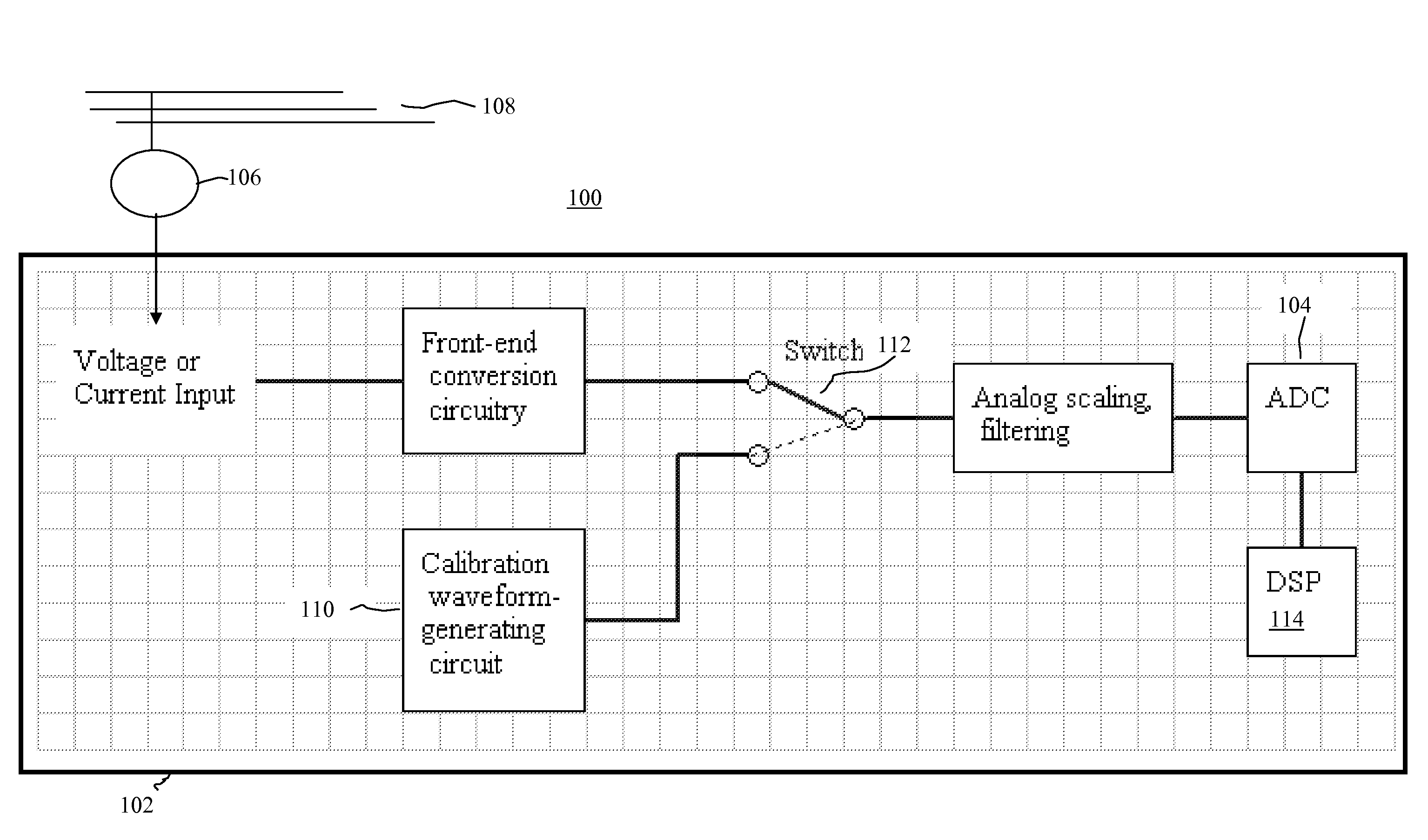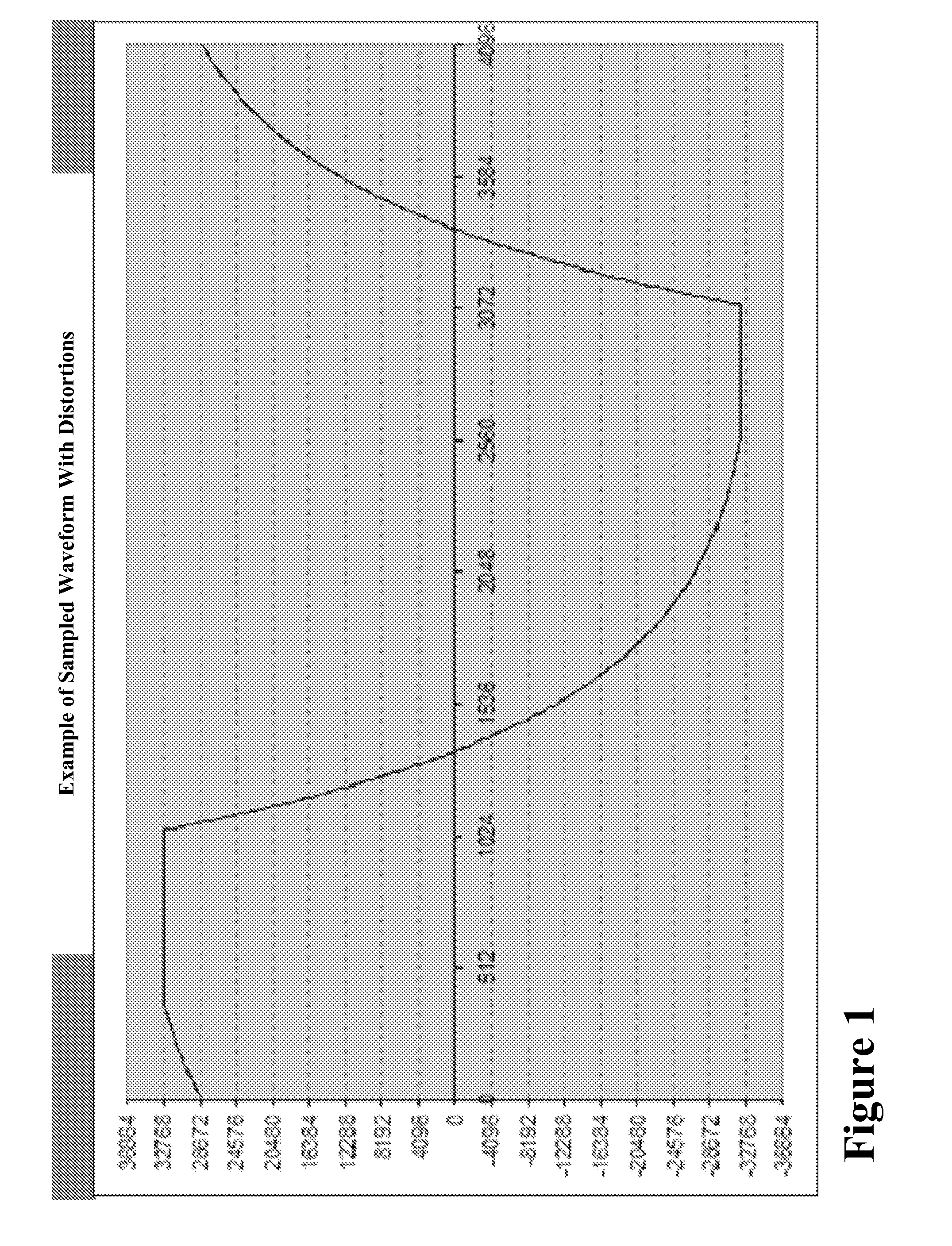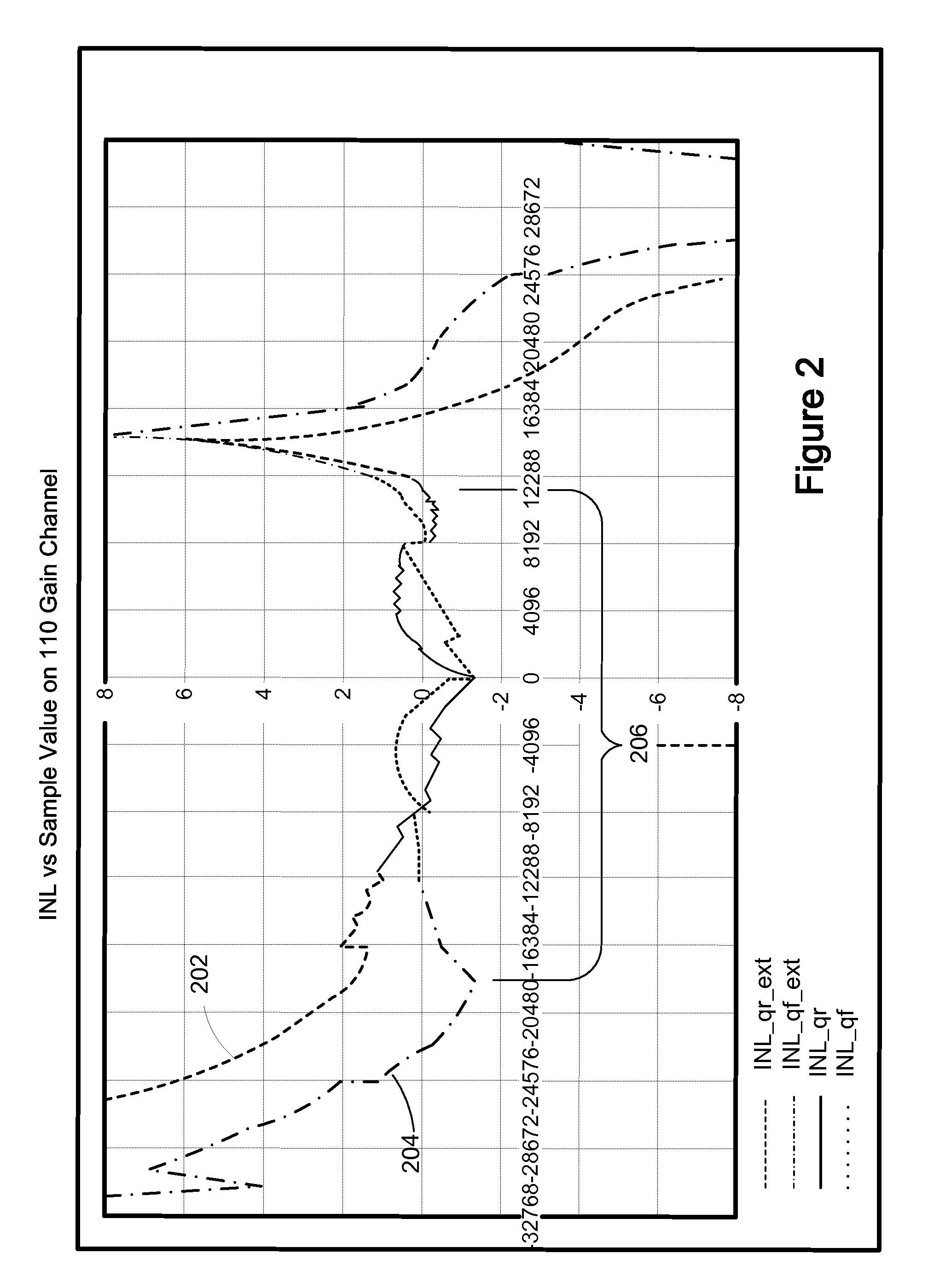Non-linearity calibration using an internal source in an intelligent electronic device
a technology of intelligent electronic devices and internal sources, applied in the direction of instruments, liquid/fluent solid measurement, sustainable buildings, etc., can solve the problems of unguarded conditions, time-consuming calibration processes, and utilities' inability to guarantee the same reliability
- Summary
- Abstract
- Description
- Claims
- Application Information
AI Technical Summary
Problems solved by technology
Method used
Image
Examples
Embodiment Construction
[0032]The disclosed embodiments relate to an intelligent electronic device, and in particular, an electrical power meter, featuring an internal calibration system capable of calibrating its measurement mechanisms for the integral nonlinearities introduced by the components which make up those mechanisms, in particular, the analog-to-digital converter (“ADC”). The analog-to-digital converter is coupled with at least one sensor which is operable to sense electrical energy in one or more conductors and output a corresponding electrical signal indicative thereof, the analog-to-digital converter being operative to convert the electrical signal output by the at least one sensor to at least one corresponding digital signal. Integral non-linearity (“INL”) is a term describing the deviation between the ideal output of an analog-to-digital converter and the actual output (after offset and gain errors have been removed). The disclosed embodiments further relate to an electrical power meter hav...
PUM
 Login to View More
Login to View More Abstract
Description
Claims
Application Information
 Login to View More
Login to View More - R&D
- Intellectual Property
- Life Sciences
- Materials
- Tech Scout
- Unparalleled Data Quality
- Higher Quality Content
- 60% Fewer Hallucinations
Browse by: Latest US Patents, China's latest patents, Technical Efficacy Thesaurus, Application Domain, Technology Topic, Popular Technical Reports.
© 2025 PatSnap. All rights reserved.Legal|Privacy policy|Modern Slavery Act Transparency Statement|Sitemap|About US| Contact US: help@patsnap.com



